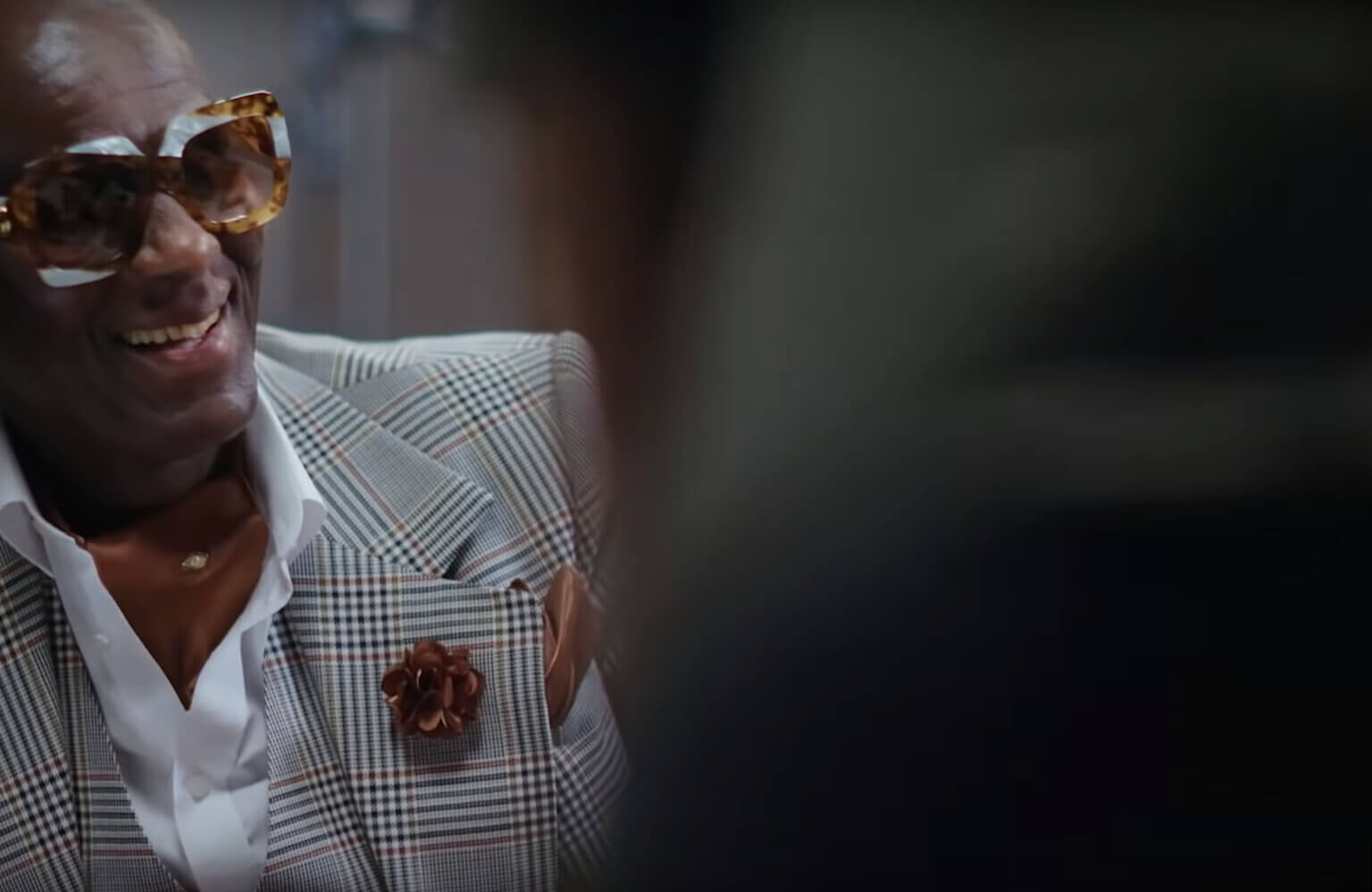
portrait
Why we put Dapper Dan on our T-Shirts
Starting THE AMBITION, one of the first things we did was produce merchandise. We ended up spending most of the profit of our first assignment on shirts and hoodies that we gave to our crew and business partners. We wanted everyone, the banker, the lawyer and the guys who did our press photos and website to wear our shirts. And we would not compromise on the design, the textile nor the print. Why? Because fashion is communication. Our shirt tells you that we won’t settle for second best and you should neither.
On the back, the shirt has a huge print of an old guy wearing big glasses, as well as a handkerchief and pocket square with his button-up shirt, vest and suit jacket. How is that representing hiphop culture? Well , this guy is 76-year-old Dapper Dan. And Dan embodies hiphop like no one else.
Starting from the bottom
Dapper Dan grew up in the heart of Harlem in the 1950s. As a teenager, he made a name for himself rolling dice. Sounds like things kids would do? Yes, unless you start playing for big bucks, against grown men. He spend the money he made on drugs and having fun.
Dan found a new way to channel his ambition when heard a speech by Malcolm X. He became politically engaged, gave up drinking, smoking, drug use, and eating meat. He went back to school, courtesy of a program sponsored by the Urban League and Columbia University. He was able to tour Africa in 1968 as one of the students chosen by a University program.
“It changed my life. All of the artwork on the walls [of my living room,] I brought those back with me from Nigeria. I also brought some suits over there. The tailors in Africa were making their version of a westernized, American suit.”
Scanning his environment, recognizing what was valuable and putting it in a new context was something he learned even before rap music made this mindset known as sampling.
“I knew I liked clothes, and I knew all the hustlers in Harlem, so I said, “I’m gonna open a clothes store and cater to all of those people.””, Dan told rap legend Nas in a conversation for “Interview”, the magazine Andy Warhol started.
Nas remembers being impressed by people wearing Dan’s gear when he was a child. Dan ended up creating the look for the golden age of rap music. But it took a while to get there.
Making something out of nothing
Although Dan had the money necessary to buy more exclusive goods, many wholesalers would not sell to him: a black guy from the center of Harlem. His contacts included people who shoplifted from department stores. So he bought garments from them and resold them from his car.
The exceptions were Fred “Fred the Furrier” Schwartz, his brother Harold, and Harold’s son, Andrew Marc Schwartz, who had started the fashion label “Andrew Marc”. Dan bought leather jackets with possum lining of them and sold them for $800 a piece. This price being $400 below what a competitor demanded, Dan had to deal with an adversary complaining to his supplier.
The Schwartz family suggested removing the logos from the jackets’ insides. Without the name on it, Dan’s $800 killer price would not hurt the brand. Not disclosing the brand name would not hurt a high quality jacket, would it?
The Schwartz’s idea made Dan realize which importance brands had in an environment, where people came from poverty, struggled for money and wanted to show their successes. Dan told the New York Times:
“The label is everything[.] The label is the thing the gangster clientele use to let the other gangsters in the street know, ‘You ain’t got what I got.’ The label or logo sets you apart.”
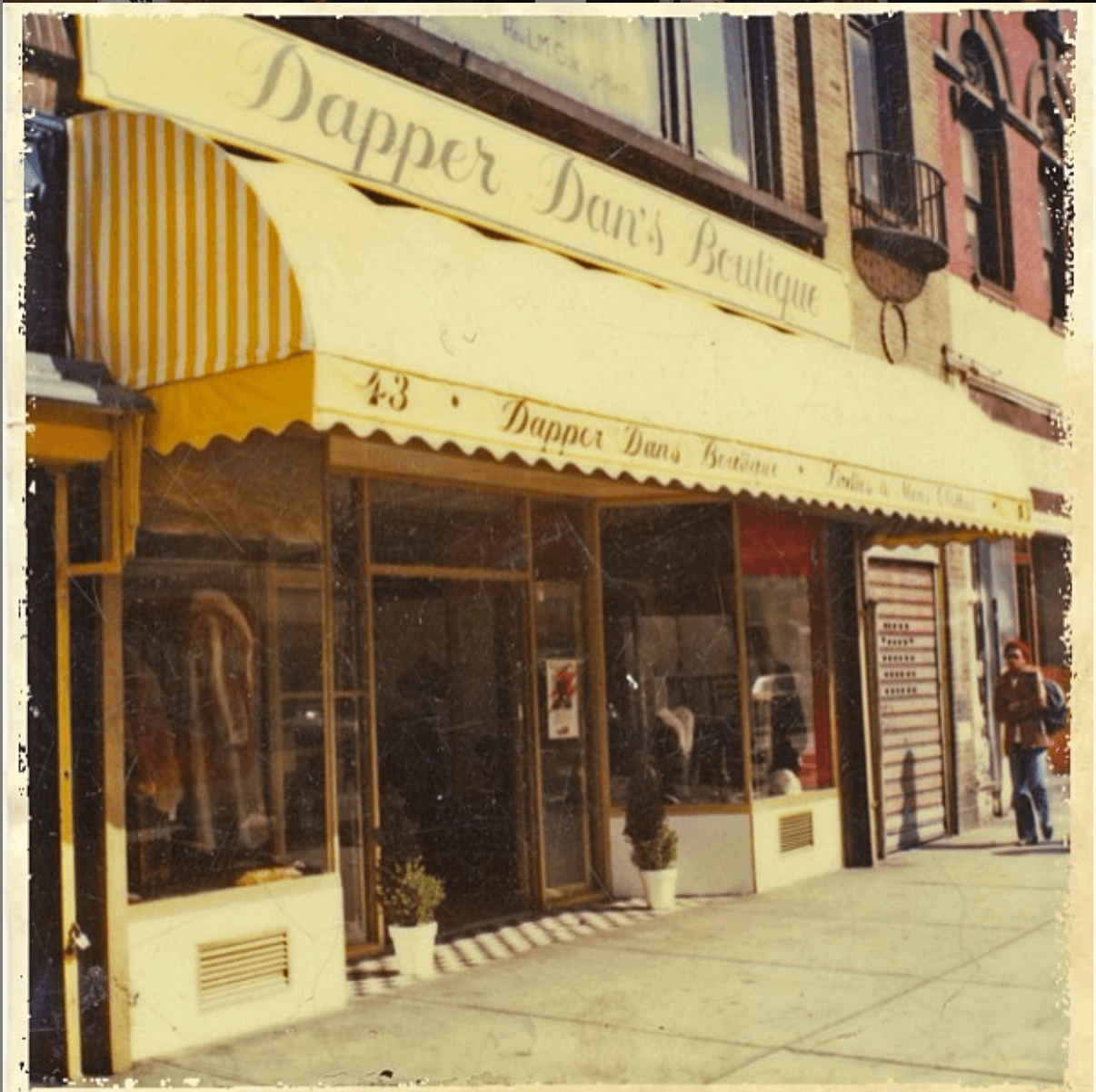 Dapper Dan’s Boutique on 125th Street. October 5th, 1984. Source: https://www.instagram.com/p/VnXBWmjMBE/
Dapper Dan’s Boutique on 125th Street. October 5th, 1984. Source: https://www.instagram.com/p/VnXBWmjMBE/Hiphop culture’s brand affinity
High end jackets with no logos were no option. Turned out that clothes, that were not even produced by a luxury brand but carried their logo were very much a thing, however.
Dan opened Dapper Dan’s Boutique on 125th Street between Madison and Fifth Avenue. One day he noticed a customer bragging about his Louis Vuitton pouch:
“It occurred to me, if that’s how he feels about the pouch, how would he feel if that Louis Vuitton pouch became a whole outfit?”
„What I learned when I opened the store was that a logo is like a diamond. A diamond signals you have money. A logo had the same effect. The more diamonds you have, the bigger you are. The more logos you have, the bigger you are.”
That was when everything changed. As The New York Times recalls, Dan hired tailors, „including Africans he had met in Midtown, family members and a friend from the Nation of Islam”, a political religious group Dan used to be associated with:
“I told this brother, ‘I have a lot of ideas, I just need you to do the cutting as I give you the patterns.’ I studied how he would sew the leather from the patterns of my design ideas.”
The key? It’s skills.
Even more than hiring others, Dan set his sights on acquiring skills. He taught himself textile printing. He found a chemical that adhered to leather. He kept the cans secret so nobody knew what kind of ink he was using.
Dan’s rise to fame took place while his neighborhood suffered from the policies of the Reagan government. Many companies moved production to China. Dan went to auctions where machines from closed factories were sold. Often he was the only black person at the auctions. He did not only use the tours to shop, but to ask the right questions – and learn more.
Dan took the logo’s of famous European brands and put them on bootlegged garments that fit the taste of his surrounding. He worked the logos into „leather coats, hats, suits and even car interiors“. Some customers even requested bullet-proof parkas and hats.
The city suffered not only from Raegan-politics however, but also from the crack epidemic. While it killed thousands, the drug wave also made some people very rich. And like most from Dan’s environment who made a small fortune, drug dealers communicated their success through products that everyone could see. Preferably the clothing, that Dapper Dan produced. Drug kingpin Alpo Martinez became one of Dans most loyal customers.
Soon it wasn’t only the drug dealers and hustlers who shopped at Dan’s Boutique but also rappers. In 1985 Dan styled LL Cool J. Then his clothes ended up on the covers of Eric B and Rakim’s legendary albums “Paid in Full” and “Follow the Leader”. He worked for Salt-N-Pepa, KRS-One, Jam Master Jay of Run-DMC and Big Daddy Kane as well as boxer Mike Tyson.
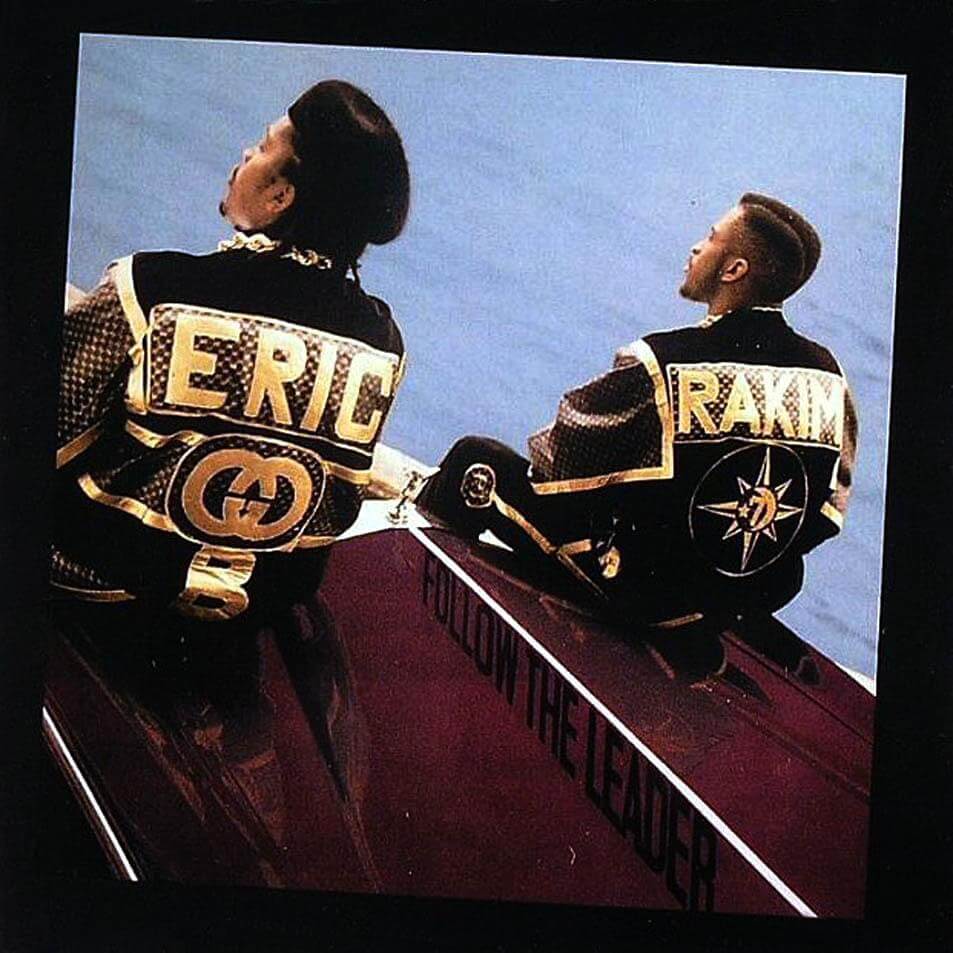 Eric B & Rakim – Follow The Leader album art
Eric B & Rakim – Follow The Leader album artSampling as a universal technique
What Dapper Dan was doing was sampling. Like the first hiphop DJs, who used to play the breakbeat of a disco record over and over again, using two turntables, switching from on to the other to create something new. Like rap producers looping a few seconds of a soul-song and playing new drums to it.
Samira Nasr, fashion director for Elle magazine:
“Dap was sampling in a way. He was taking existing fabrications and breathing new life and beauty into them.”
The father of rap star A$AP Ferg used to work at Dan’s boutique in the ’80s. Ferg recalls:
“What Dap did was take what those major fashion labels were doing and made them better. He taught them how to use their designs in a much more effective way. Dap curated hip-hop culture.”
What Dan did, was hiphop. He knew how to make something out of nothing by being creative. And he knew, how to create something new by identifying goods and putting them in a new context.
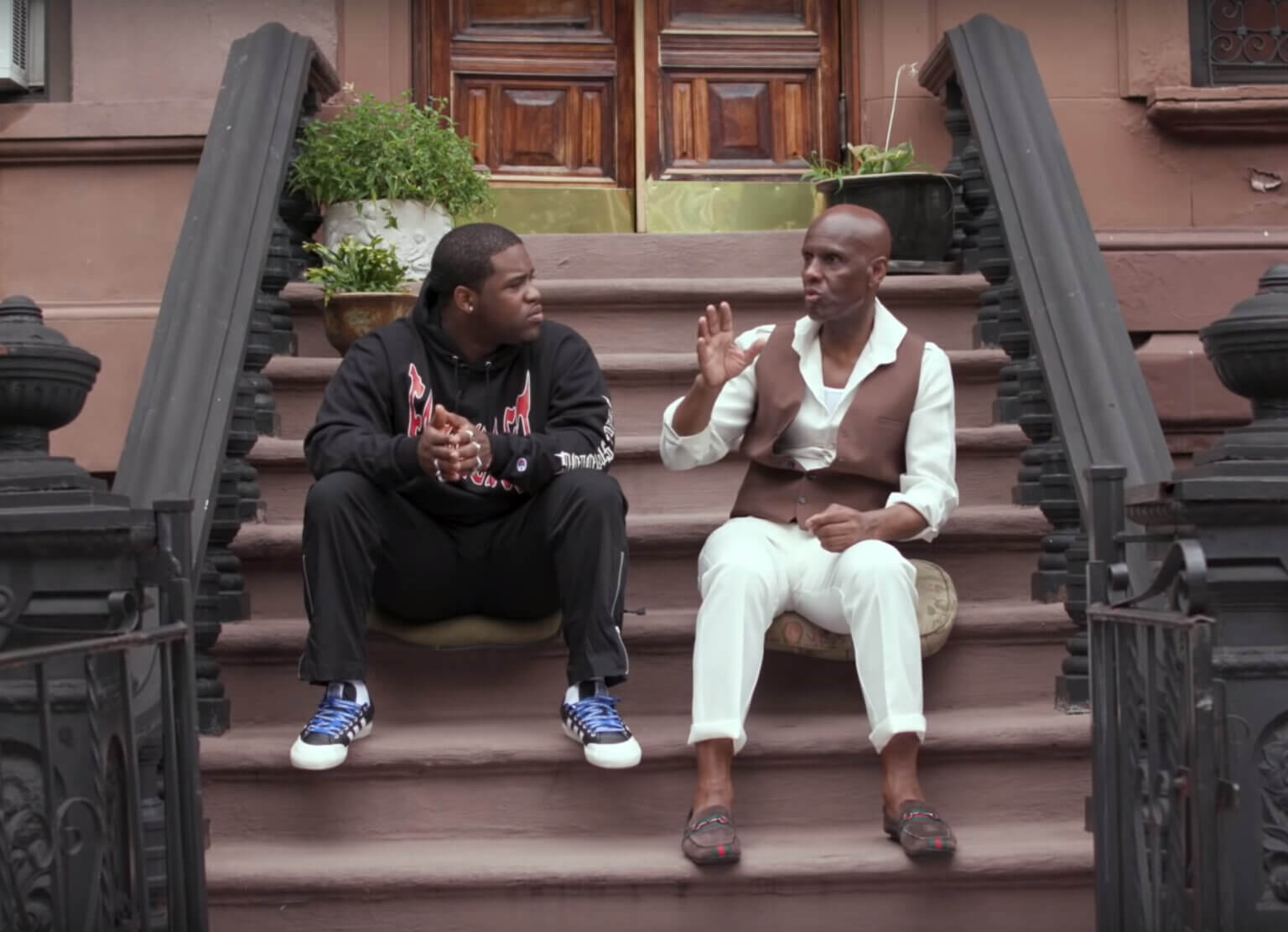 A$AP Ferg and Dapper Dan on MTV News
A$AP Ferg and Dapper Dan on MTV NewsHow the corporate world is missing out on opportunities
Dapper Dan’s streetwear became too big to fly under the radar. The luxury brands didn’t love what Dan was doing. They crushed what they felt took away from their brand. Fendi sued Dan for trademark infringement after he had used the company’s logo in his creations.
In 1992, Dapper Dan’s Boutique, one of Harlem’s temples of aspiration, was closed. Dan disappeard from the public for many years. He only resurfaced temporary when he styled rapper Nelly or boxer Floyd Mayweather.
What the high fashion companies didn’t understand was, that Dan was not taking away anything, he was adding value to their brands. As former music manager and today’s agency head Steve Stout puts it in his book “The Tanning of America”:
“Dapper Dan played an extremely important role in introducing the founding hip-hop generation to couture brands. What’s more, he translated those elements of haute couture into applications that were understandable to young, hip aspirational taste-makers. At the time, Gucci would never have made, as Dapper Dan did, sweat suits. They would never have upholstered a car interior. They wouldn’t have understood. But Dapper Dan understood the aspiration, and he put it into silhouettes that were cool and street and influenced a generation’s idea of what was high style. Because of Dan, I believe, an appreciation of specific couture brands became inbred in hip-hop culture.”
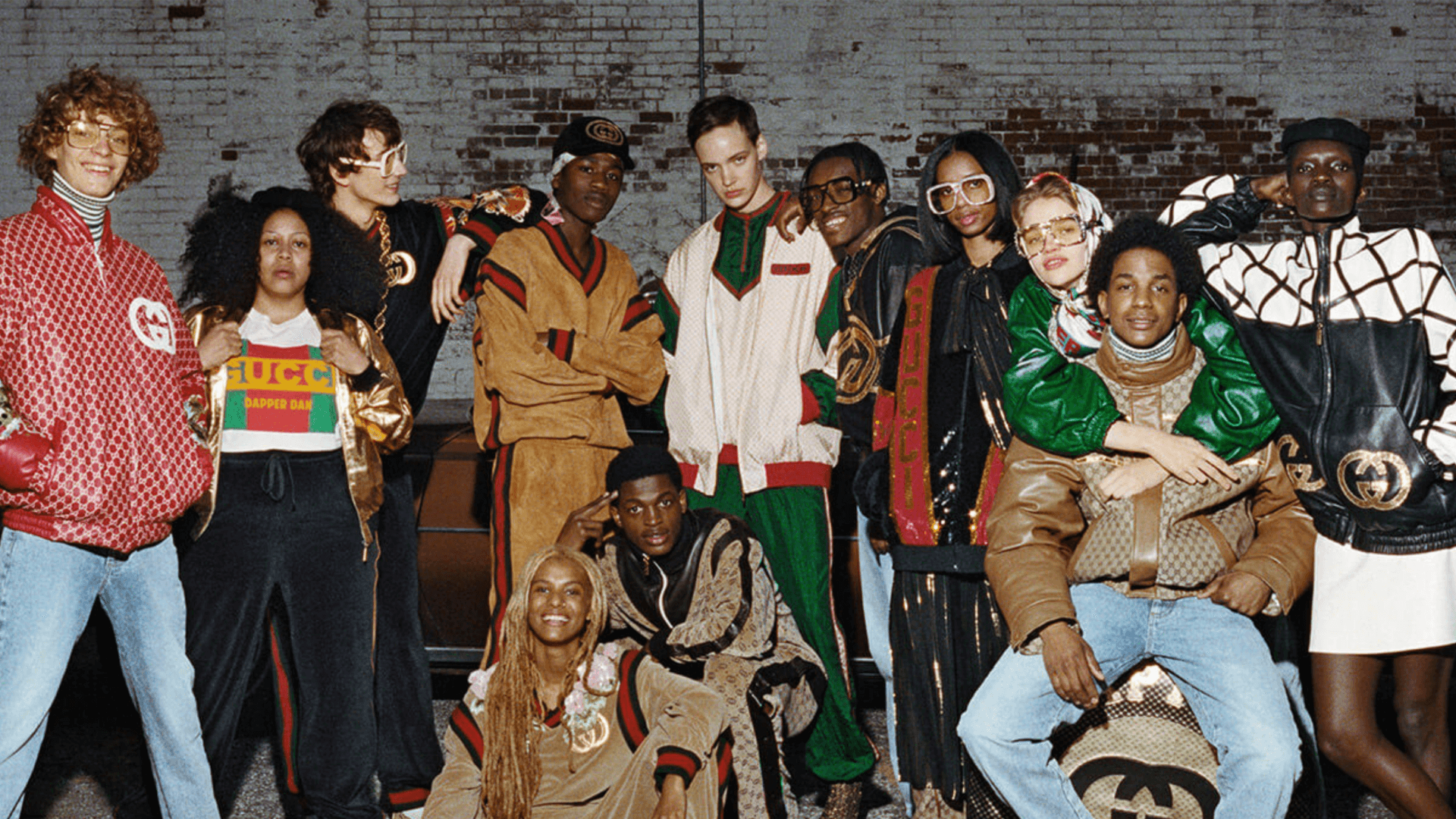
How Gucci brought back Dapper Dan.
And Dapper Dan brought back Gucci.
Than, in 2017 Gucci released a balloon-sleeved, fur-paneled bomber jacket that looked a lot like what Dan used to do. The archetype was obviously a fur-lined, ballon-sleeved bomber jacket covered in Louis Vuitton logos Dan did back in the good old days. Gucci was accused of cultural appropriation. They answered, that their work should be understood as an homage.
In 2015 Marco Bizzarri had become CEO of the than-struggling luxury powerhouse. He brought in a new Creative Director, Alessandro Michele. Bizzarri gave Michele creative freedom. Michele cracked the code of how to reach the minds of millennials. To make Gucci cool again he looked at the most prominent music culture.
In 2017, after Gucci’s controversial homage, Gucci partnered with Dapper Dan for a line of men’s wear. In 2018, Dan and Gucci even opened a new store together in Harlem. It’s the first luxury house fashion store in Harlem. The New York Times wrote about Fendi closing down Dapper Dan:
„The fashion house won the battle, but Dapper Dan won the war.”
And Gucci won, too. In 2018, millennials accounted for half of Gucci’s product sales. Gen Z represented the fastest-growing group of buyers. Gucci managed to stay true to it’s DNA, embracing new generations at the same time. They embraced their subcultural relevance and used it to show to the masses that their clothes were what urban trendsetters deemed cool – the strongest message they could deliver. This time, they really paid homage. They understood, what sampling was and used it for their benefit.
So, why do we put Dapper Dan on our T-Shirts? Because he taught us how to make something out of nothing through creativity. He showed how sampling can be used not only in music production. He implemented the DNA of luxury brands into hiphop culture. He injected hiphop genes into Guccis DNA. He made both inseparable. He showed what brands could do for hiphop culture and what hiphop could do for brands.
As Nas used to tell Dan:
„Ultimately, you and Gucci partnered together. [You changed the game, but you’re still in the community]. And that made everybody – I mean everybody – happy. It’s like a celebration among the hip-hop community. […] It’s historic.”
Dapper Dan embodies everything we are trying to say.
Dapper Dan’s biography “Dapper Dan: Made in Harlem: A Memoir” is available on Amazon.
Sources
- Barry Michael Cooper – The Fashion Outlaw Dapper Dan. The New York Times, 2017 https://www.nytimes.com/2017/06/03/fashion/dapper-dan-harlem-gucci.html
- David Marchese – Dapper Dan on creating style, logomania and working with Gucci. The New York Times Magazine, 2019 https://www.nytimes.com/interactive/2019/07/01/magazine/dapper-dan-hip-hop-style.html
- Nas – Dapper Dan on Gucci, gangsters,and his unstoppable fashion empire. Interview, 2018 https://www.interviewmagazine.com/fashion/dapper-dan-gucci-interview
- Steve Stoute – The Tanning of America: How Hip-Hop Created a Culture That Rewrote the Rules of the New Economy. Gotham, 2011


